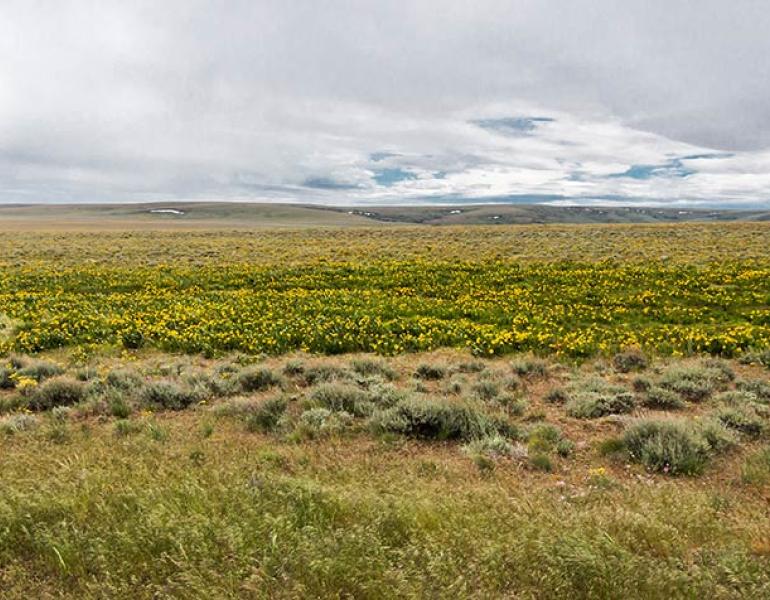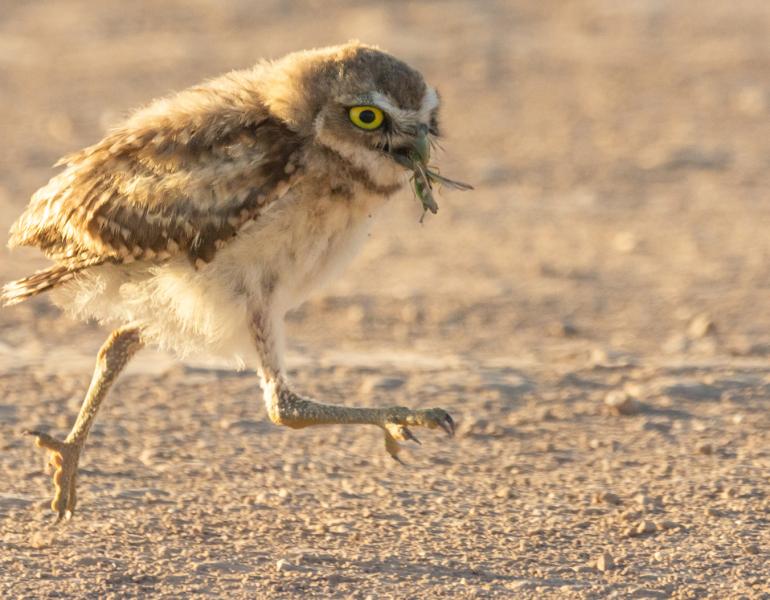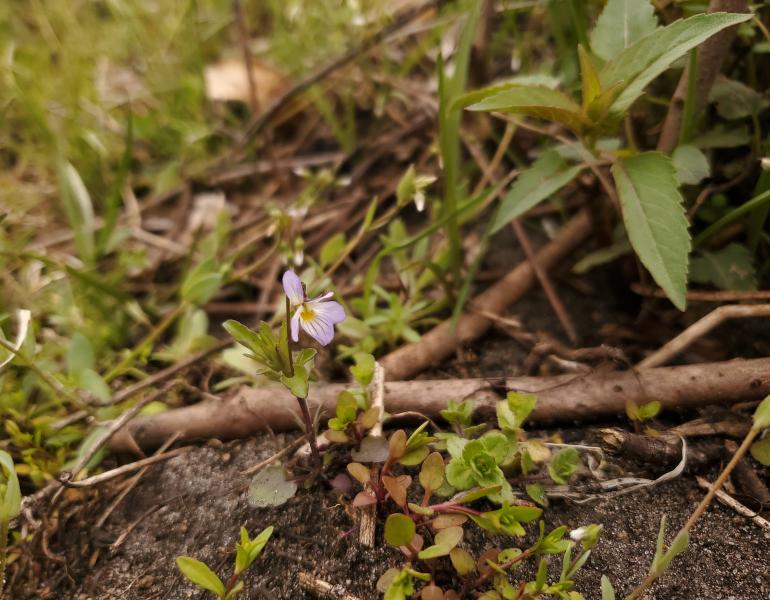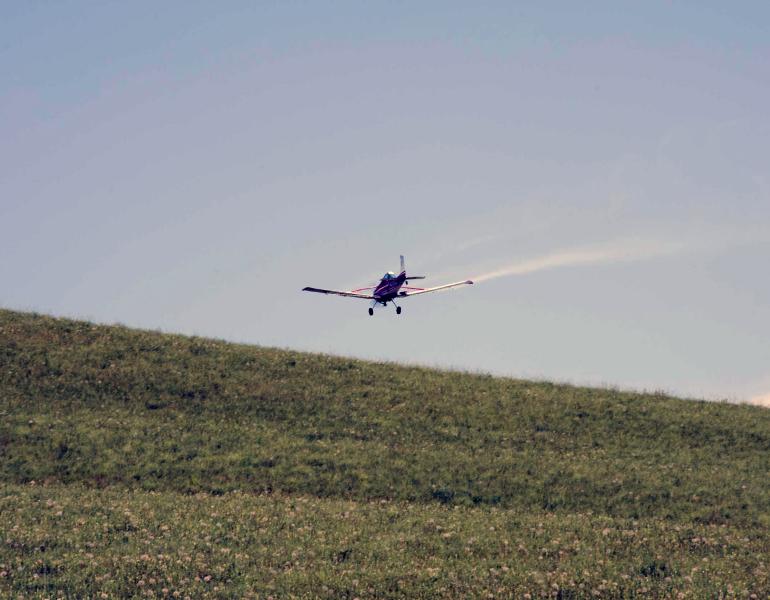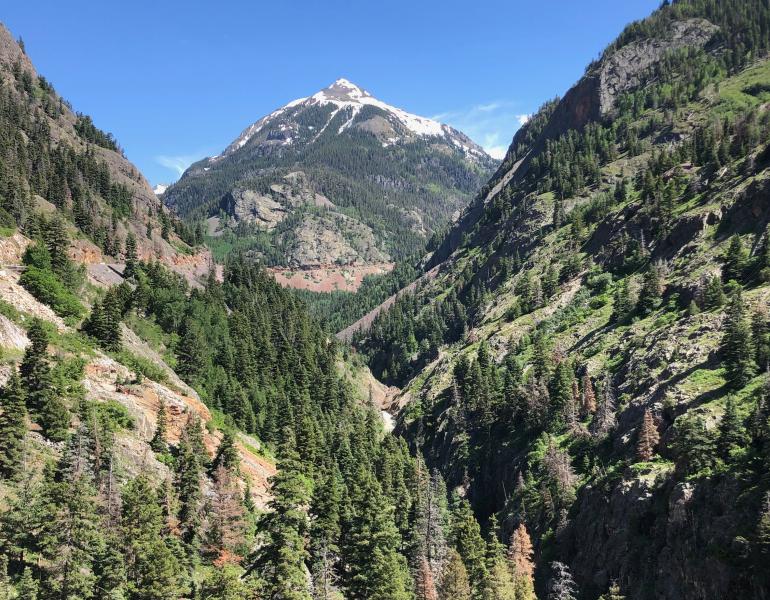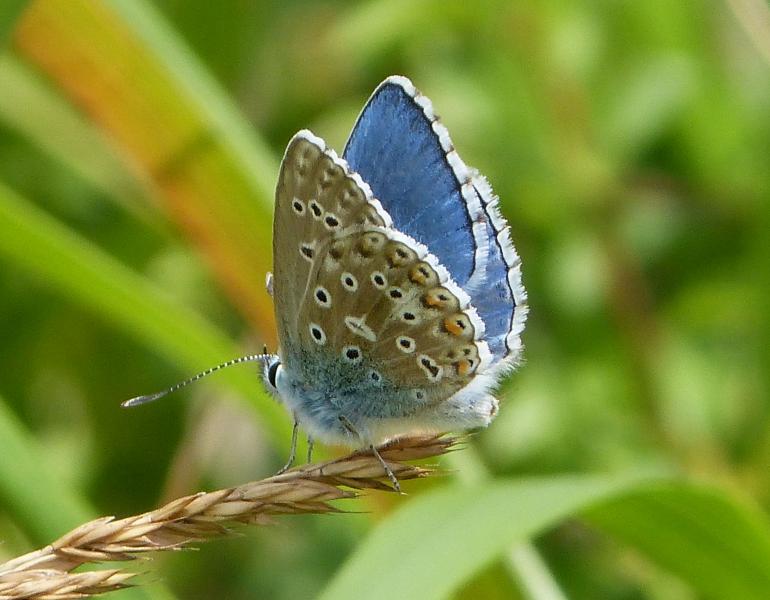Xerces won a lawsuit that will help to reshape the federal grasshopper management program into one that better supports everyone: ranchers, farmers, and wildlife.
Grasslands
Inspiration for Pollinator Conservation: Wildflowers on Rangelands
Sarah Hamilton Buxton shares her path to pollinator conservation, and her work to promote more diverse plant communities on rangelands of the Great Plains!
Selecting seeds for bison, pollinators to share the land
While designing a unique seed mix for restoration takes time, it can be well worth the extra effort. The right mix of plants can boost the long-term ecology and function of a landscape and can be particularly important for working lands – those with multiple uses like agroforestry, grazing and silvopasture. In this article, Farm Bill Pollinator Conservation Planner Karin Jokela describes making the perfect mix to balance the needs of bison and pollinators.
Creating Wildflower Meadows from Scratch or by Simply Changing Mowing Regimes
When someone asks for help to increase pollinators in their landscape, many times the initial request is to start a pollinator meadow from seed. We love successful wildflower meadows started from scratch—but they can take several years of work. In the right place, just reducing mowing can result in improved conditions for pollinators.
Burning the Land
Fire has been used to manage prairies for centuries, and remains an important tool for grassland managers to reduce woody plant encroachment and increase flower production of key nectar and pollen sources. However, burning entire landscapes is problematic for pollinators, and fire must be used carefully.
Protecting Grassland Ecosystems from Insecticides
Grasshoppers play a central role in rangeland ecosystems and food webs. Herbivory by grasshoppers speeds up the recycling of nutrients from plants, and they are a vital part of the diet of dozens of other rangeland animals. Aerial spraying campaigns to control grasshoppers have wide impacts on rangeland ecology. Xerces staff are working to reduce spraying and protect rangeland wildlife.
The Return of Wild Pansies at Polk City Cemetery
In Iowa, volunteers are working hard to restore an area of old prairie. They are seeing signs that the grassland is recovering, including the regrowth of pale coneflowers and wild pansies.
Great Plains Rangelands Are Important Habitat for Pollinators
Rangelands of the Great Plains are a highly diverse—and endangered—ecosystem filled with subtle beauty that is often underappreciated. These landscapes evolved with natural disturbances, such as grazing and wildfire. Maintaining disturbance through active management is essential for healthy rangelands and pollinators.
Mitigating the Effects of Climate Change On Grassland Butterflies
Grasslands provide important habitat for a range of butterflies, some of which rely on these open sunny habitats for survival. Climate change adds an extra layer of threat and concern.
Home on the Range: Grasshoppers and Insecticides on Western Rangelands
Usually considered competitors with livestock for forage, grasshoppers can actually be beneficial to rangelands by affecting plant composition, and even influence the soil microbial communities. They also play a critical role in the grassland food web. Despite the inability to tie grasshopper densities to the potential for damage, planes and ground crews are deployed every summer to spray against grasshoppers.
Discovery of a Rare Plant Through Remnant Prairie Restoration
Less than one-tenth of a percent of Iowa's native tallgrass prairie remains. The scraps that survive are valuable refuges for less-common plants and deserve thoughtful management.
Pollinator Conservation Program Digest – September 2019
September’s featured staff members have been providing Monarch and Pollinator Habitat Kits to select organizations in California, training Colorado Department of Transportation staff on roadside pollinator habitat, and attending the America’s Grasslands Conference, held this year in North Dakota.
The Striking Beauty of Oklahoma’s Butterflies
Oklahoma’s impressive butterfly fauna of more than 170 species includes the nation’s largest and the smallest, and representatives of all six major butterfly families.
Ups and Downs of English Chalk Grasslands
About a third of Britain’s sixty resident butterfly species may be encountered on chalk grasslands, but it is a handful of blues—common, chalkhill, small, and Adonis—that may be most characteristic of this habitat.


